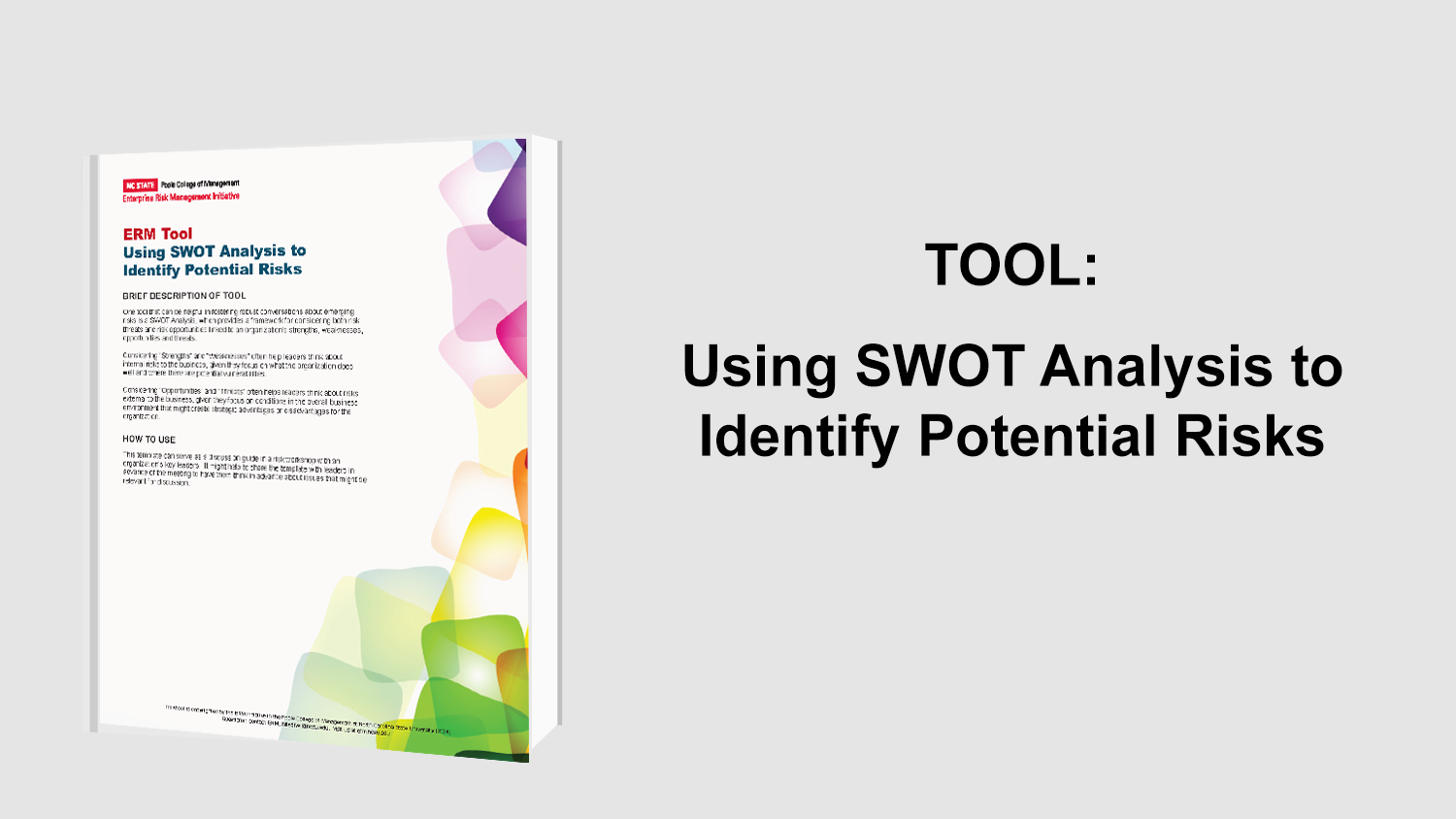Four Takeaways from the Fall 2024 ERM Roundtable Summit
The NC State ERM Initiative hosted our Fall 2024 ERM Roundtable Summit on November 6, gathering over 150 risk management and business executives — and featuring expert discussion leaders from organizations including NASCAR, Chick-fil-A, Inc., Fastenal, Sherwin-Williams and NC State University.
We’ve pulled together four high-level insights from the Summit into how leaders are strengthening enterprise risk management for organizational success.
Download the full report for actionable strategies and best practices to strengthen your ERM approach.
Quick Takes from the Summit
- Leadership with a Risk Mindset: A strong risk culture starts with leaders embracing a proactive approach. Eric Jacuzzi, VP of Vehicle Performance at NASCAR, emphasized that having talented teams who can respond quickly and thoughtfully in high-pressure situations is crucial for mitigating reputational risks. Dan Florness, president and CEO of Fastenal, echoed this by noting that risk management should become part of an organization’s DNA, where all employees “own” risks. Dustin Ade, senior principal team leader at Chick-fil-A, highlighted the importance of tiered risk ownership to create a cohesive, collaborative risk network. Mary Cole Pike, executive director of communications and chief of staff at NC State, shared that crisis readiness benefits greatly from predefined roles, ensuring leaders can focus on either strategic issues or tactical tasks effectively.
- Preparation as a Cornerstone for Success: A common theme was the importance of proactive preparation in mitigating future risks. Speakers stressed that robust, advanced planning helps identify vulnerabilities before they escalate. Jacuzzi noted that constant vigilance and the mindset that “anything can happen” strengthens readiness for the unexpected. Ade emphasized scenario planning and pressure testing as tools that highlight vulnerabilities and improve response strategies. Florness suggested that understanding and planning for future risks can lead to strategic opportunities, while Pike emphasized that pre-established “lanes” of responsibility among leaders help avoid chaos during a crisis and streamline the response process.
- Consistency Enhances ERM Effectiveness: The speakers underscored that having structured, repeatable ERM processes is vital for building organizational resilience. As Jacuzzi observed, clear processes eliminate confusion, allowing leaders to focus their energy on effective risk navigation. Ade recommended providing leaders with practical tools and templates, like playbooks and tabletop exercises, to streamline ERM involvement. Aaron Morrow, director of ERM at Sherwin-Williams, added that aligning teams across different units fosters systems thinking, improving communication and collaborative risk management. He also shared that risk taxonomies help create a shared language, making risk conversations more efficient.
- The Importance of Self-Assessment: Effective risk management doesn’t end after a crisis is managed; it requires reflective analysis. Timely post-event reviews to capture lessons learned can identify what worked well and what needs improvement. Jacuzzi shared that NASCAR holds debriefs promptly after each event, ensuring that insights are gathered before memories fade. Florness encouraged organizations to customize their approach, or “Fastenal-ize” their ERM, so it aligns with their unique culture. This reflective approach was supported by Morrow, who emphasized that evaluation should be unbiased, focusing on decision-making processes rather than just outcomes.
Lastly, aligning ERM strategies with customer needs is critical. Organizations that consider and mitigate their customers’ risks often find new strategic opportunities.
For more tools and templates, visit our ERM Resource Center.
- Types:



